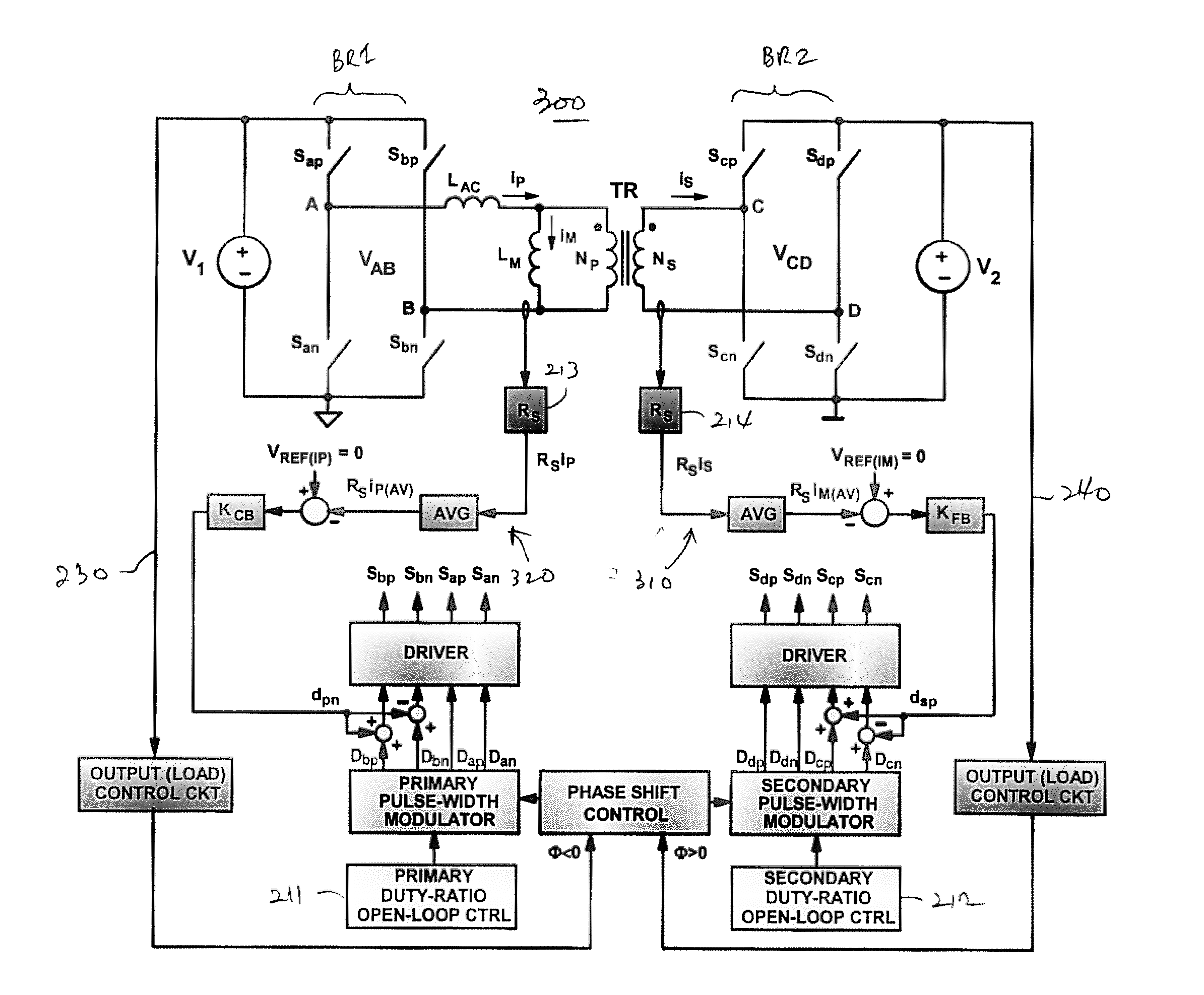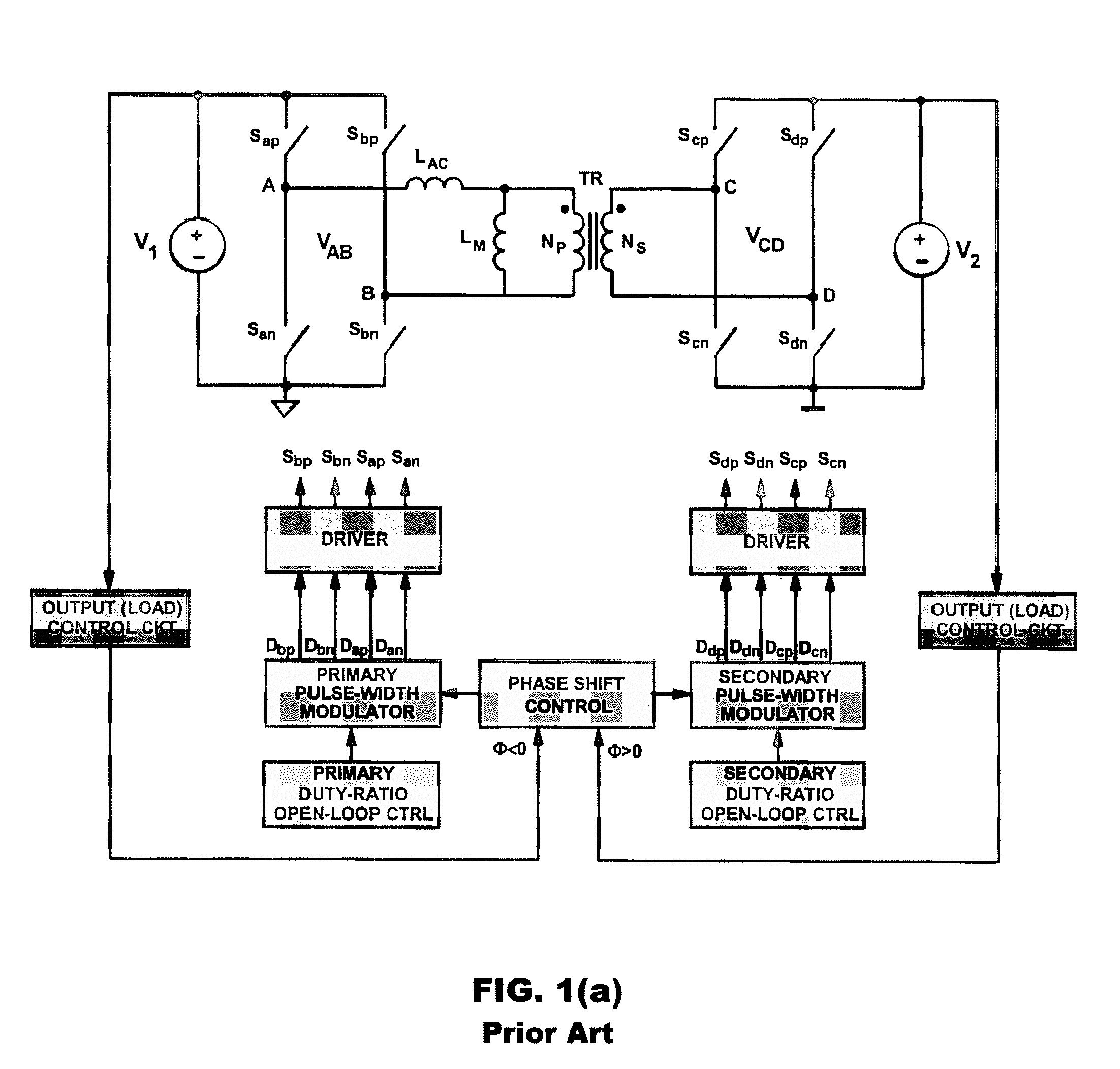Bidirectional converters and flux-balancing control methods thereof
a bidirectional converter and flux-balancing control technology, applied in the direction of electric variable regulation, process and machine control, instruments, etc., can solve the problems of transformer saturation, volt-second imbalance across the transformer winding, and insufficient attention, so as to eliminate the dc component of the magnetizing current and the bandwidth of the flux-balancing control loop is much higher
- Summary
- Abstract
- Description
- Claims
- Application Information
AI Technical Summary
Benefits of technology
Problems solved by technology
Method used
Image
Examples
Embodiment Construction
[0022]FIG. 2 shows DAB converter 200, in accordance with an exemplary embodiment of the present invention. As shown in FIG. 2, DAB converter 200 includes (a) isolation transformer TR, (b) inductor LAC, (c) bridge BR1, which comprises switches Sap, San, Sbp, and Sbn, and (d) bridge BR2, which comprises switches Scp, Scn, Sdp, and Sdn. Inductor LAC is coupled between source V1 through bridge BR1 and one winding of transformer TR (arbitrarily denoted “the primary winding”). Another winding of transformer TR (“the secondary winding”) is coupled to source V2 through bridge BR2. Sources V1 and V2 can be any kind of DC power sources that can deliver and store (receive) energy, including batteries and super-capacitors.
[0023]In DAB converter 200, switches in the same leg of a bridge (e.g., switches Sap and San) operate in a complementary fashion—i.e., when one switch of the leg is closed the other switch of the leg is open and vice versa. In a practical application, to achieve zero-voltage-s...
PUM
 Login to View More
Login to View More Abstract
Description
Claims
Application Information
 Login to View More
Login to View More - R&D
- Intellectual Property
- Life Sciences
- Materials
- Tech Scout
- Unparalleled Data Quality
- Higher Quality Content
- 60% Fewer Hallucinations
Browse by: Latest US Patents, China's latest patents, Technical Efficacy Thesaurus, Application Domain, Technology Topic, Popular Technical Reports.
© 2025 PatSnap. All rights reserved.Legal|Privacy policy|Modern Slavery Act Transparency Statement|Sitemap|About US| Contact US: help@patsnap.com



